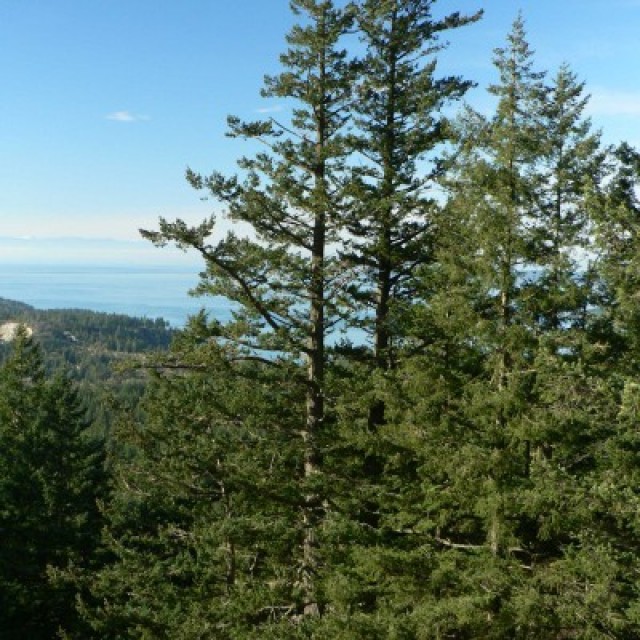COMMON NAME
common Douglas-fir
SCIENTIFIC NAME
Pseudotsuga menziesii
ALSO KNOWN AS
Coastal douglas-fir, Interior douglas-fir
Plant family
Pine (Pinaceae)
Plant group
Conifers
405 reports
Identification hints
Douglas-firs are called firs because like firs they have a series of needles that are separately attached to the twigs as contrasted with pines and larches which have needles in bundles (fascicles) or spurs. Pointed red buds distinguish Douglas-firs from true firs, such as grand-fir (Abies grandis) and subalpine fir (Abies lasiocarpa). True firs have sticky rounded green to whitish buds. True firs also have more stiff rounded needles (with a tiny notch at the tip), and cones which are erect and born on the upper sides of branches. The most distinctive feature of Douglas-firs are the "mouse-tail", or exerted bracts on the cone scales, which extend outside of scales and have long narrow point (the tail).
Did you know?
Douglas-fir is the one of the most valuable lumber trees in the world. The wood is used as poles, beams, in bridges, as railroad ties, structural timber, in plywood, and to make furniture. It is found in many homes every December as a popular Christmas tree. Native Americans used the resin as an antiseptic in the treatment of burns, scrapes, and rashes. European explorers often placed young shoots in their boots to prevent athlete's foot and nail fungus. The tallest Douglas-fir on recorded is 100 meters (330 feet) high! This long lived species can exceed 1,000 years of age.
- 2021 Chicago Botanic Garden. All Rights Reserved.
-
Creative Commons
BY-NC-SA 4.0 - Terms of Use
- Privacy Policy
- Data Sharing and Citation Policies
- 2021 Chicago Botanic Garden. All Rights Reserved.



